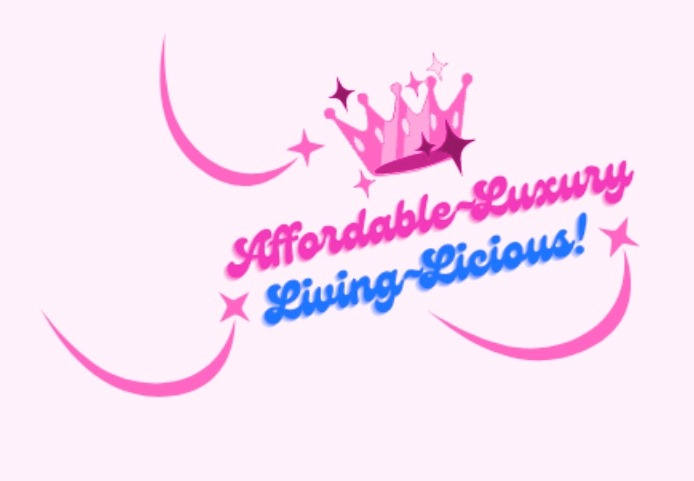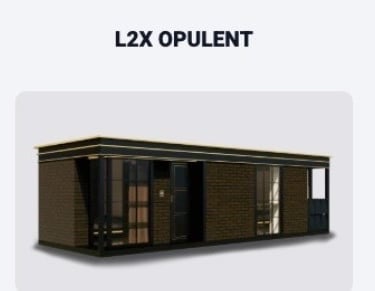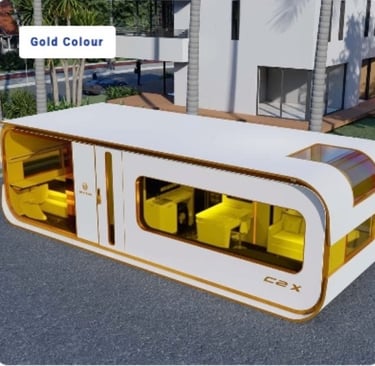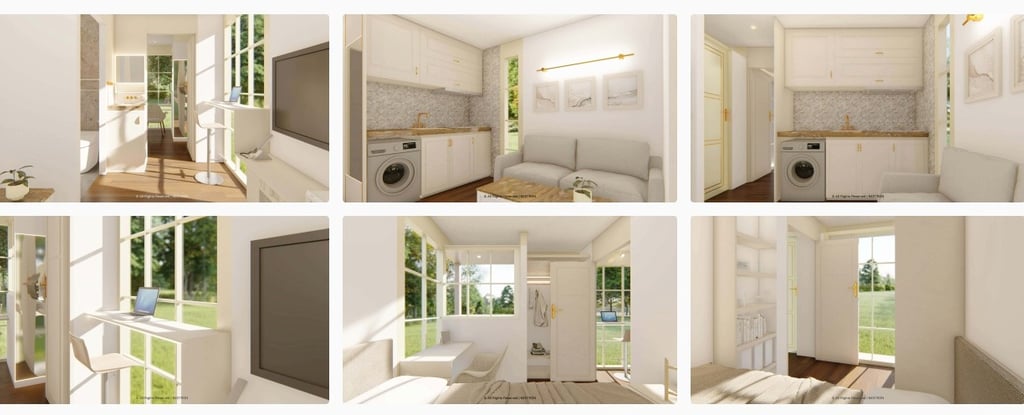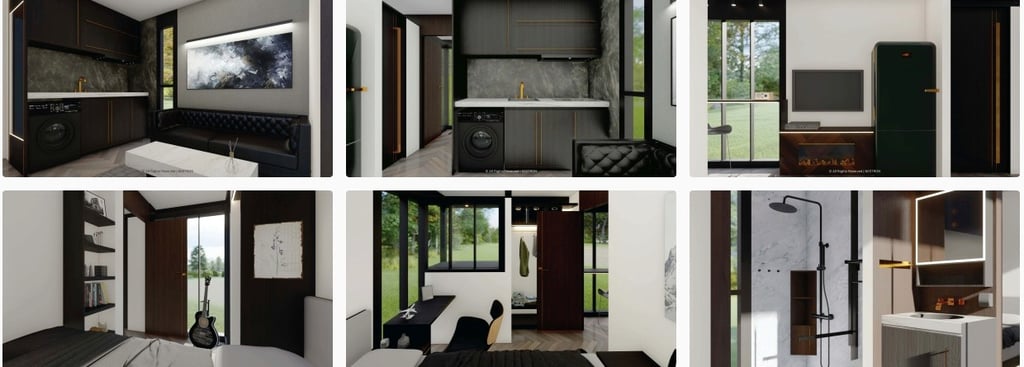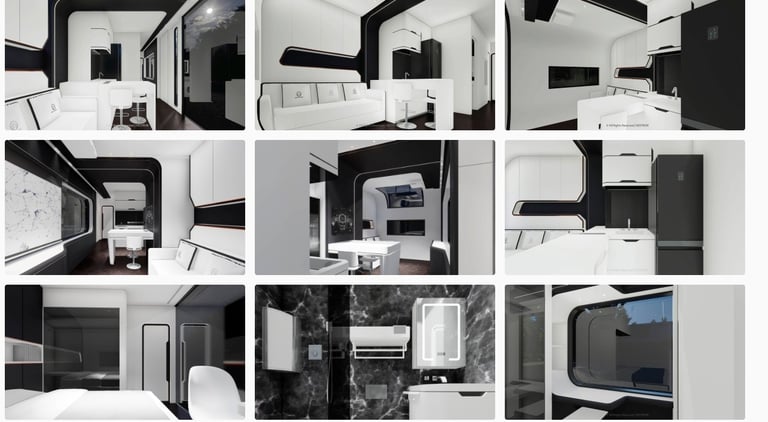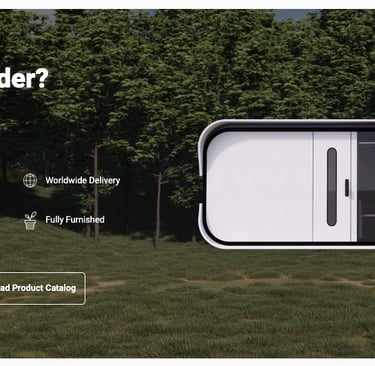Explore Our Stunning Smart Luxury Homes ~ Mobile & Garden Homes Designed For Luxury, Affordability, & Sustainability!
Why Smart Tiny Homes Beat Condos & Apartments For Rental Returns
10/10/20255 min read
Understanding The
Smart Tiny Home Concept
The smart tiny home concept represents a modern approach to minimal living, seamlessly integrating advanced technology with compact and efficient design. Smart tiny homes maximize space through innovative layouts and multifunctional furniture, making them appealing not just for personal use, but also as investments for rental returns. These homes generally range from 100 to 400 square feet, significantly smaller than traditional condos and apartments, which often contain excessive features for typical urban living.
Furthermore, the versatility of living in a tiny home enables tenants to prioritize experiences over material possessions, nurturing a lifestyle that emphasizes minimalism and intentional living. This appeal contrasts sharply with traditional condos and apartments that often encourage a cluttered lifestyle filled with excess space and items. As such, smart tiny homes are particularly well-positioned to attract a demographic seeking to downsize. Renting a smart tiny home offers prospective tenants a modern, tech-savvy environment with essential comforts without the responsibility of excessive living expenses.
The Financial Advantages of Smart Tiny Homes
Investing in smart tiny homes presents various financial benefits that can outperform traditional condo and apartment investments. One of the primary metrics to consider is the initial investment cost. Smart tiny homes generally require a lower upfront expense compared to larger condo units or apartments, making them an attractive option for new investors. Due to their compact size and efficient design, the costs associated with land purchase and construction tend to be reduced, allowing investors to allocate resources more effectively.
Another financial advantage of smart tiny homes is their potential for increased rental income. With the trend towards minimalism and eco-friendliness, many renters are seeking out these innovative living spaces. Properties equipped with smart technology, such as energy-efficient appliances and remote-controlled systems, can command higher rents compared to traditional apartments or condos without these features. Furthermore, smart tiny homes often achieve higher tenant retention rates. The convenience and modern appeal of smart technology can lead to tenant satisfaction and reduced turnover, thereby ensuring a consistent rental income.
Market Trends and Demand for Smart Tiny Homes
The real estate market is witnessing a burgeoning trend toward small living spaces, particularly with the increasing popularity of smart tiny homes. This shift, influenced by various factors, reflects changing societal values and preferences that favor minimalism, affordability, and sustainability. Smarter living arrangements are becoming increasingly attractive to renters, particularly millennials and Gen Z, who prioritize experiences over possessions and seek economical solutions that align with their lifestyles.
Moreover, economic factors have prompted an increased interest in renting rather than purchasing traditional condominiums or apartments. With rising housing costs in urban areas, many individuals are seeking affordable and flexible living arrangements. Smart tiny homes, associated with lower operational costs and minimal maintenance requirements, represent a viable solution for those looking to capitalize on the benefits of renting. As renters seek flexible living solutions that accommodate both temporary and long-term needs, smart tiny homes emerge as a logical choice, bridging the gap between affordability and modern convenience.
Case Studies ~ Successful
Smart Tiny Home Rentals
The rise of smart tiny homes has generated a wave of successful rental projects across various regions, exemplifying not only the financial viability of this investment but also the satisfaction of renters. One notable case is a smart tiny home community in Austin, Texas, where property owners transformed a modest plot of land into a thriving network of efficient, fully equipped tiny homes. Incorporating energy-saving technologies, these homes appeal to environmentally-conscious renters, resulting in high occupancy rates and substantial rental income. The incorporation of smart features, such as automated energy management systems and smart locks, has attracted a diverse tenant base looking for convenience and sustainability.
Testimonials from renters further highlight this trend; numerous individuals have stated that living in smart tiny homes provides a more fulfilling experience than conventional housing options. One tenant remarked, “I appreciate the functional use of space and the built-in technology that helps reduce my utility bills.” Such insights underscore the growing demand for these properties, suggesting that the combination of functionality, sustainability, and community has positioned smart tiny homes as a preferred choice for renters looking for both comfort and cost-effectiveness.

